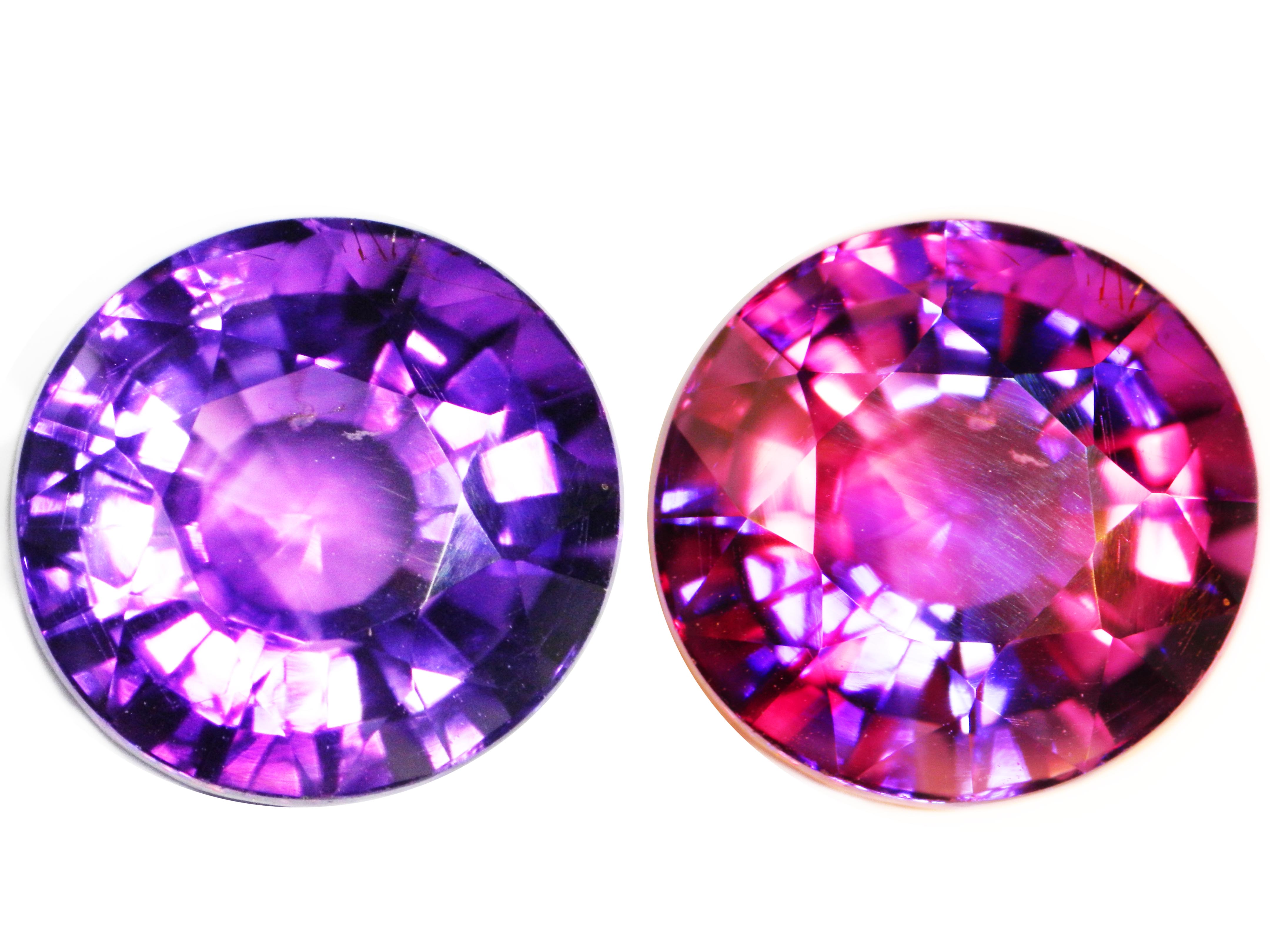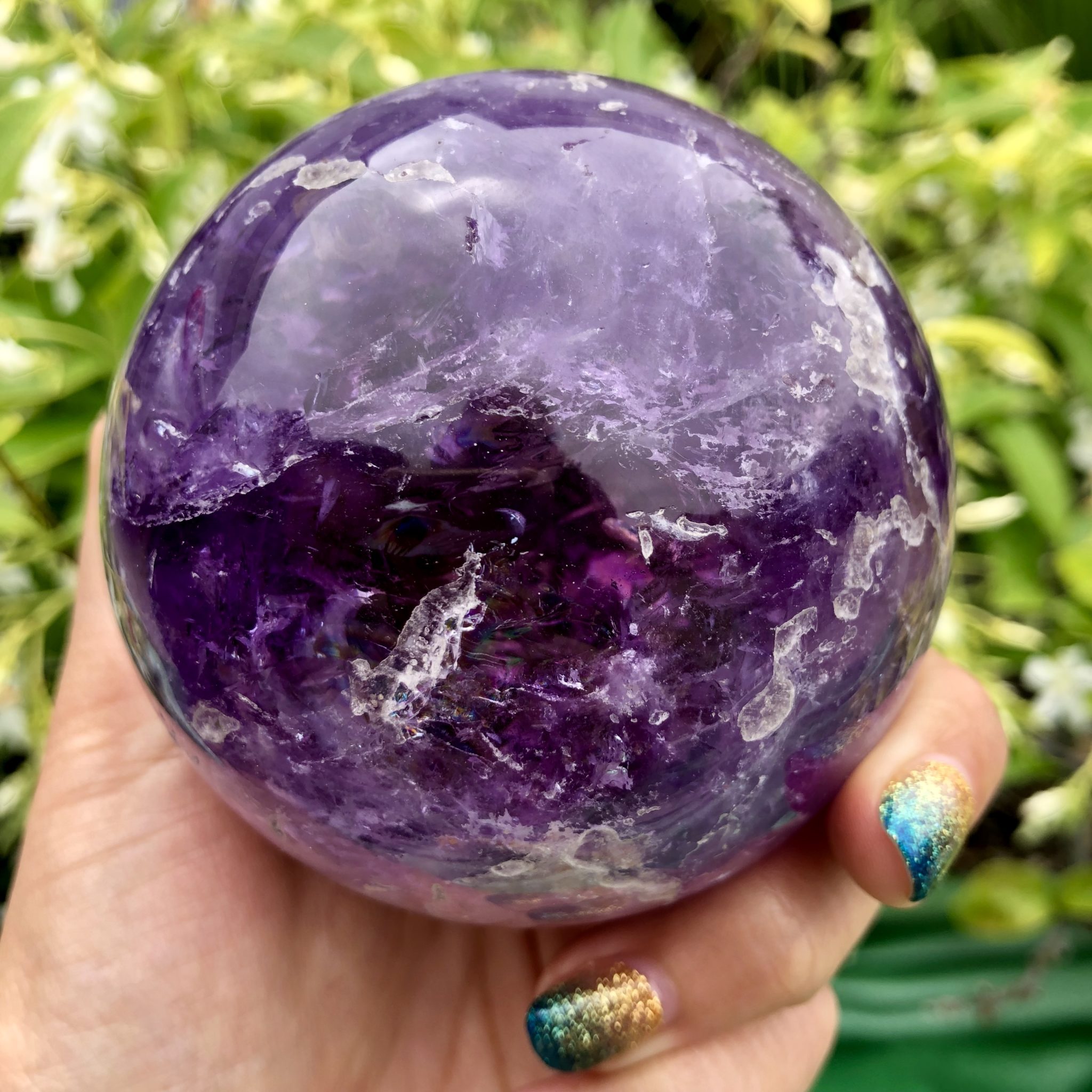
Uruguayan Amethysts are very flowy, with beautiful formations. Michal buys every pineapple she can get her hands on because they are very sought after in the middle of rooms to bounce energy around along with the beauty of having crystals looking fabulous from 360 degrees. They are known for their special formations like baby finger stalactites as small as 1 inch in diameter of stacked points to 6-inch stalactites with a center of Agate, which you can make into jewelry when sliced, rosettes that are small balls made of points to spin energy, and pines, which are large pineapple or larger size half moon shaped lumps that are about movement of energy and spreading energy around. But there are also different formations and colors that can come out of an Amethyst, especially from Uruguay. Michal brought in the largest Amethyst geode ever to enter the US, weighing 8 tons and 16.5 feet tall from Uruguay. They can be gigantic geodes, up to 16.5 feet tall and very wide. The Amethysts that come from Artigas, Uruguay are rounder, wider shaped geodes with a basalt color of beige to light brown compared to Brazil, which are darker. The mines are located in a cattle farming area where there is rock just 3 feet down so it cannot be used for crops or developed.

This is a new process that’s very sustainable environmentally. Uruguay is mined along with Agate by digging into flat land to develop caves that are only 50 feet underground. The only countries in the world that mine geodes for commercial buying at this time is Brazil and Uruguay. They are all mined and formed differently. You may also get Amethyst from Morocco, Kenya, South Africa, and Bolivia. Now in North America, only Thunder Bay, Ontario, Canada has Amethyst available to purchase. Arizona, Colorado, and Delaware used to produce Amethyst.

These two countries are unparalleled in production both in terms of quantity and quality. Uruguay produces the world’s largest geodes, which are enormous in scale. Michal selects the best looking geodes for the shiny, dark purple formations, as well as special pieces with Calcite inclusions and different colors. Most of the world’s commercial geodes come from Brazil, where thousands of tons are mined each year. So we must determine whether it is worth it or not. Then we stick in a light and to see the quality and size because it can take months to unearth just one large geode. To mine Amethyst, we first need to locate the geodes by drilling holes in the basalt walls in search of hollow areas, which we know will contain goedes. Geodes are like a “volcanic burp.” Within igneous rocks in the mountains, pockets form in the basalt and crystalize over time because of water and heat. When we mine them, the miners create tunnels where we drill holes in the basaltic lava walls that holds the geodes stagnant. Specifically in Brazil, they are nestled in volcanic mountains.

Amethyst geodes are formed over millions of years across the world.


 0 kommentar(er)
0 kommentar(er)
